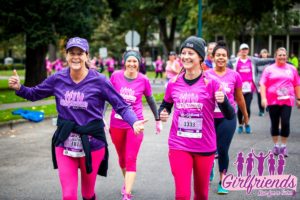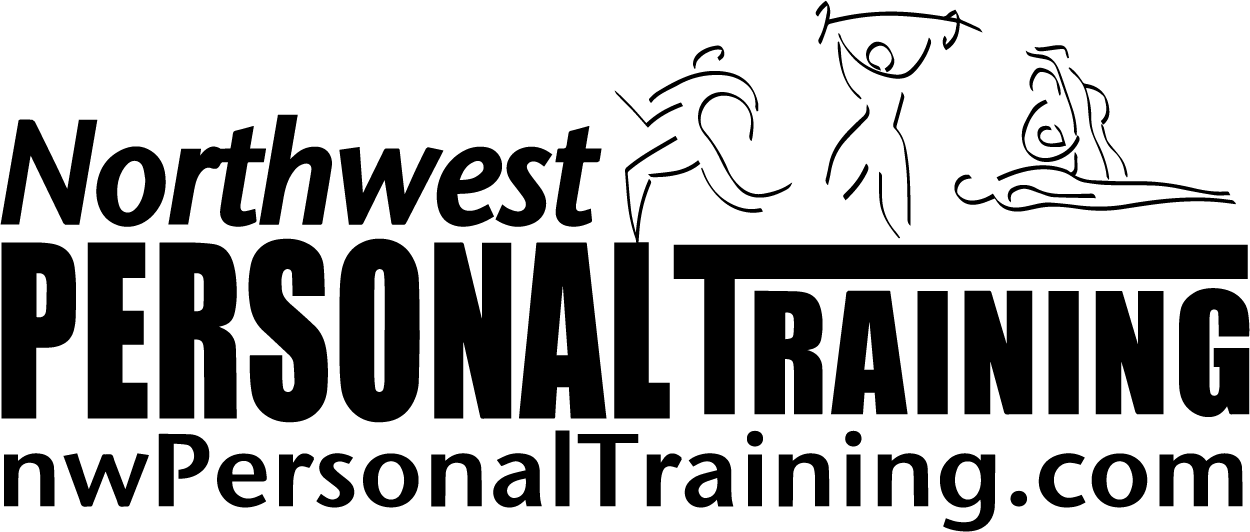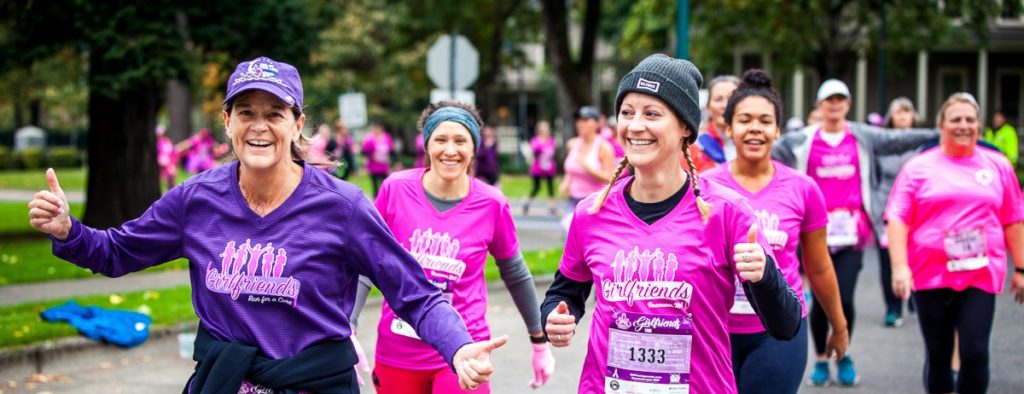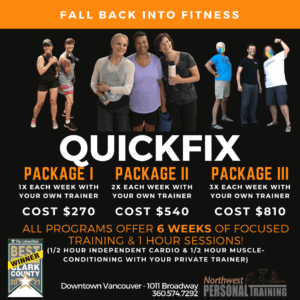Vancouver is home to two very popular running events in the fall, the PeaceHealth AppleTree Marathon, Half & 5K and the Girlfriends Half/10K/5K hosted by Why Racing Events. You will start to see many locals running around town as they train to get ready to challenge themselves to cross the finish line.
 If you register and commit to a running event, the last thing you want is an injury to sideline you. It’s important to note that, as with any form of exercise, there are stresses associated with running. In comparison, the impact forces associated with walking are quite low since one foot is always in contact with the ground. However, when a runner leaves the ground with each stride, the impact forces are much higher.
If you register and commit to a running event, the last thing you want is an injury to sideline you. It’s important to note that, as with any form of exercise, there are stresses associated with running. In comparison, the impact forces associated with walking are quite low since one foot is always in contact with the ground. However, when a runner leaves the ground with each stride, the impact forces are much higher.
In fact, approximately 3-4 times the body weight of an individual is absorbed with each stride. You can imagine that over the course of a long-distance run, the amount of force the body absorbs is tremendous. Due to the nature of the sport, aches and pains, imbalances and areas of weakness can result.
Don’t forget to sign up under “Weekly Fitness Tips” to automatically receive my latest blog post in your inbox!
Do the benefits of running outweigh the risks? Most life-long runners will attest that their life is better with running. Once you begin a running program you can expect to improve your cardiovascular and respiratory system, improve your body composition, increase your bone density, improve your self-esteem and confidence, increase your energy, and decrease your risk of experiencing health disorders or disease. Running is an incredible form of exercise to help improve your overall health. However, if running just doesn’t work for your body, the good news is that if you walk instead of run the distance, you’ll still get the benefits; it will just take you longer but will impose less impact on your body.
If you have decided to be a runner and your goal is to run pain-free for a very long time, certain preventative measures can be taken. Research has shown the areas that suffer the largest amount of stress include the feet, the shins, the knees and the hips. Therefore, a specific program that addresses these areas should be followed if long-term running is a goal.
Here is a program of running exercises that you can start doing anywhere – no equipment is required. Adhere to the following program 2-3x/week and look forward to many miles and many smiles!
Single Leg Balance
Stand on one leg with your knee slightly bent and attempt to maintain your balance for 15 to 30 seconds. Keep your hip, knee, and foot aligned with hip over knee over foot. Do 1-3 sets. As this task becomes easy, make it more challenging by adding in the following progressions:
Hip drops
Continue on one leg but now slowly let your hip move laterally to the side as one hip lowers and the other lifts. Return back to the neutral, stabilized position. Continue for 30-60 seconds each leg.
Lowering/Lifting
Continue on one leg but now slowly bend and extend your knee into a one-leg squat while maintaining alignment. Continue for 30-60 seconds each leg
1 Leg Bridging
Lay on your back with 1 leg bent, foot on the floor and the other leg lifted straight up to the ceiling. With your arms at your side, slowly lift your hips and buttocks up towards the ceiling while contracting your glutes (buttocks) and hamstrings (back of thigh) until your body weight is resting comfortably on your shoulder blades. Throughout the entire exercise, be sure to keep your hips square to the ceiling and your abdominals contracted. Be sure not to tilt to one side while doing these 1-leg lifts. Slowly lift up and down 8-20x for 1-2 sets.
Plank
Lie on your stomach. Position your elbows under your shoulders. Contract your abdominal muscles and then slowly lift your body onto your toes and your elbows. Keep your back straight and shoulder blades pulled together. Remember to breathe. Hold this position for 30-60 seconds. Note: Feel free to start on knees and elbows and as you get stronger, slowly progress to your toes.
Ball Curls
Take a small soft ball like a Hacky Sac and squeeze your toes around the ball. Continue for 1-2 minutes.
Toe Taps
Tap your toes as fast as you can pulling your toes close to your shin. Continue for 1-2 minutes.
Barefoot Heel Raises
Stand tall. Lift your heels quickly pressing up onto your toes. Continue for 1-2 minutes.
Towel Crunches
Lay a towel flat on the floor in front of you. Place your bare feet on the towel edge closest to you and then curl your toes pulling the towel closer and closer to you. Continue this exercise for a couple minutes. It’s an easy one to do while you’re watching TV or reading. Some runners will do this in the shower with a wet towel making it heavier and more challenging.
Mobility
Runners should also utilize tools like massage therapy, massage guns, rollers, yoga and traditional stretching to help release tight tissues and maintain mobility.
Yours in health & fitness,
Sherri McMillan


